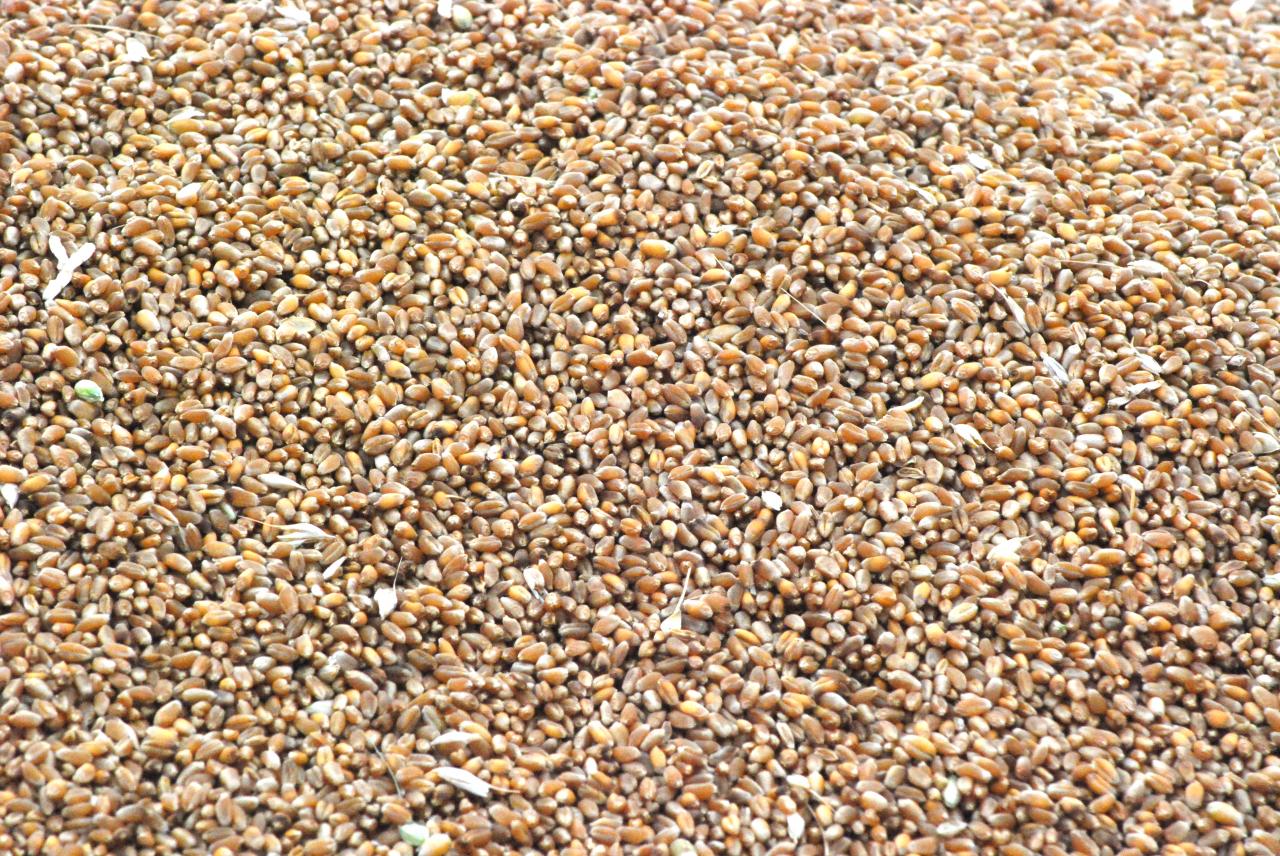Beyond the standard germination test, most professional seed testing labs offer an Accelerated Aging (AA) test that will test the seed for anticipated emergence vigor. Information on standard germination testing is presented in a companion article in this eUpdate issue.

Figure 1. Wheat seed should be tested for germination. Photo by Kansas Wheat.
This test is very capable of identifying weak seed lots where there are issues with Fusarium head scab; heating in the bin; smaller, development-stressed seeds; or more than a year old.
Briefly, in an AA test, the seed is subjected to a high temperature (106 degrees F) and high moisture stress for 72 hours before planting. This accelerates the aging process of the seed. The resulting seedlings are then counted the same as with a standard germination test. The weak seed in the population will be pushed beyond the capability of germinating into a normal seedling.
When to test: Because seed vigor will only decline over time, testing close to planting time will give the best prediction of field performance. However, if there are questions about whether there has been stress-related physiological damage to the seed, it might be best to have the AA test done shortly after harvest before investing in storage, cleaning, and seed treatments.
What the results mean: Ideally the AA score should be relatively close to the standard germination score. This would mean the seed lot has the greatest capability of emerging under a wide array of field conditions. While high vigor seed will be more forgiving, it is noteworthy that much of the crop’s ultimate success also depends on management practices, such as how the seed is planted, depth of planting, whether the soil gets crusted over by a hard rain before emergence, and other factors beyond seed quality. Even high-vigor seed lots may not produce satisfactory stands if field conditions are extreme.
If the seed has an AA germination score considerably lower than the standard germination test, this indicates the seed has reduced vigor and is more at risk when planted. Reduced vigor seed lots may still be planted and are capable of producing adequate stands. However, producers must pay extra attention to planting conditions and planting rates. This seed will likely benefit from the protection of a fungicide seed treatment.
The real point is that knowing seed quality is critical and producers need not necessarily dump low-vigor seed, nor is high-vigor seed guaranteed to make a stand under any conditions. Management practices play a big role in how well the seed performs. Producers just have to pay extra attention to their management practices and have a little extra good luck on their side if they plant seed with low AA scores.
Eric Fabrizius, Associate Director, Kansas Crop Improvement Association
efkcia@kansas.net